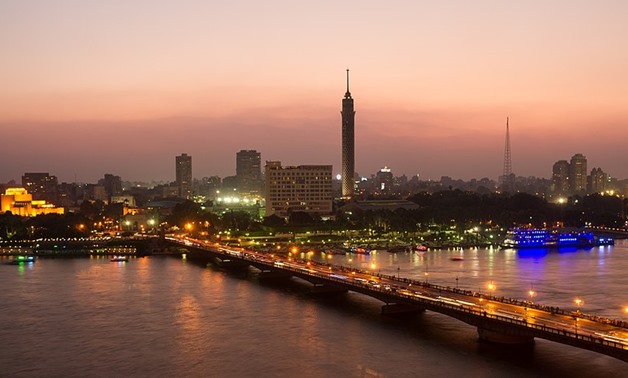
Entrance of Qasr El Nile Bridge Africa, April 29, 2017 – Wikimedia.com / Ayman Muhammad El-Shahat
CAIRO – 3 December 2017: Does your mind ever wander whilst sitting in traffic? Have you thought about the bridges that you cross every day? What if they hadn’t been built? What’s the story behind them?
If you feel bored while waiting for the cars all lined up on the top of the bridge to move or for the crowd to disappear on the footpath, we can tell you about four enchanted bridges in Cairo to comfort you during rush hour.
Every bridge in Cairo has a history, and each is integral to the city. So follow our list to see the bright side of your bridge.
Qasr El Nile Bridge:
Its structure dates back to 1931 when King Fuad laid its foundation stone to be inaugurated. At first it was named Khedive Ismail Bridge, but this name was changed after the Egyptian revolution of 1952 to become Qasr El Nile Bridge.
It links Tahrir Square in Downtown Cairo to the Cairo Opera House in Zamalek. It also offers a good view of the Nile and the landmarks scattered along its banks.
6th October Bridge:
It is ranked as one of the longest bridges in the world, as its length measures 20.5 kilometers (12.7 miles). It connects the Agouza district in the western part of the city to Gezira Island and on to the international airport in the eastern part of Cairo, crossing the Nile twice.
 6th_October_Bridge from a Building Near Ramses Station
6th_October_Bridge from a Building Near Ramses Station
Constructing this bridge took almost 30 years, as it was started in 1969 and put into operation in 1996. Since its opening, it has become one of the most important bridges in the capital, with around 500,000 people crossing it every day.
It takes its name from the important historical date of October 6, 1973, when Egypt defeated Israel in the 1973 October War.
Imbaba Bridge:
This bridge, built from 1913-1925, is a replacement for an older one that connected the city to the Giza train station by rail, where the railway then stretched over 935 kilometers to the Aswan High Dam.
However, the current version was designed by the Ministry of Transportation in 1980 to operate heavier carriages and increase traffic across the bridge.
The bridge includes two railway tracks, two passages for vehicles and two passages for pedestrians, and it is the major railway bridge across the Nile River.
Giza Railway Bridge:
Historically, it is the first railway bridge in Egypt, Africa and the Middle East. It was inaugurated in September 1856 to span from Giza to Cairo. It is 535 meters in length and 20 meters wide.
It was originally named after Khedive Abbas, but was changed to Giza Bridge after the Egyptian revolution of 1952, as happened with many other bridges.

Comments
Leave a Comment